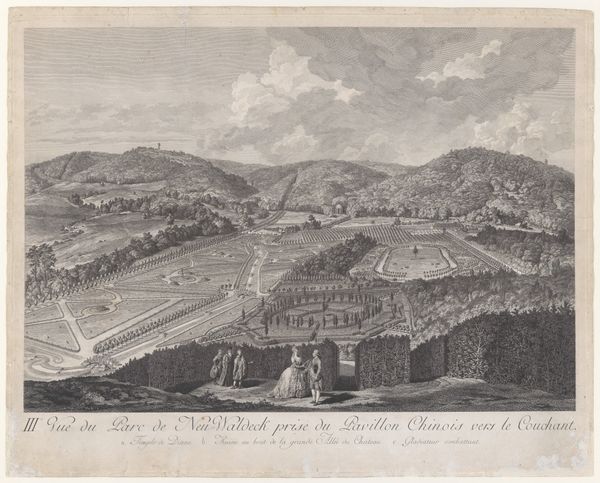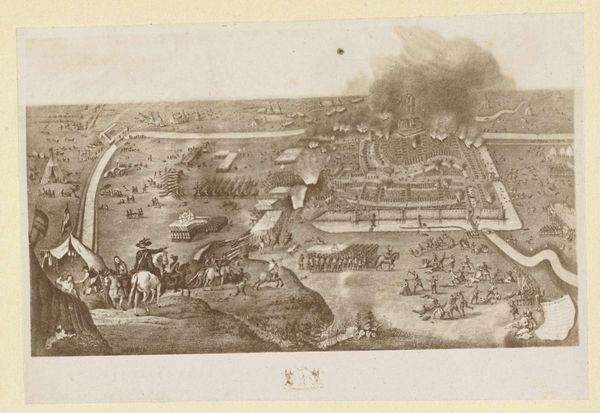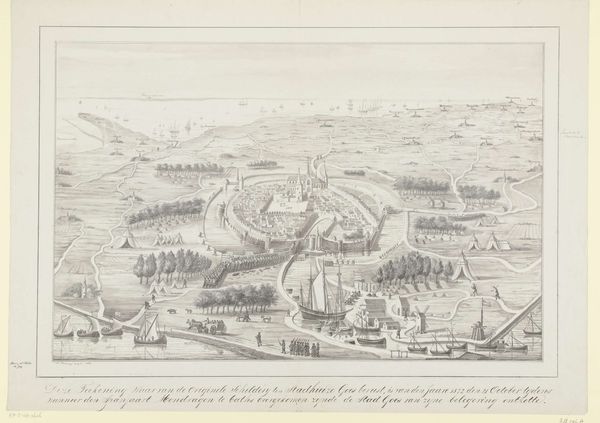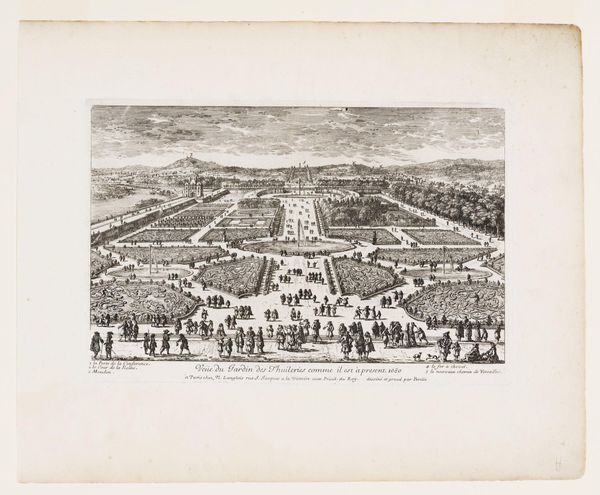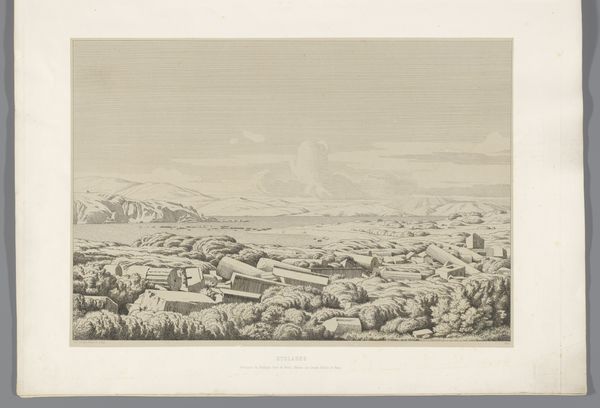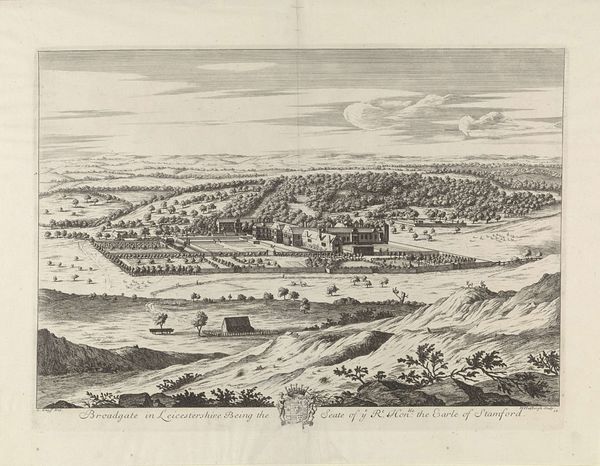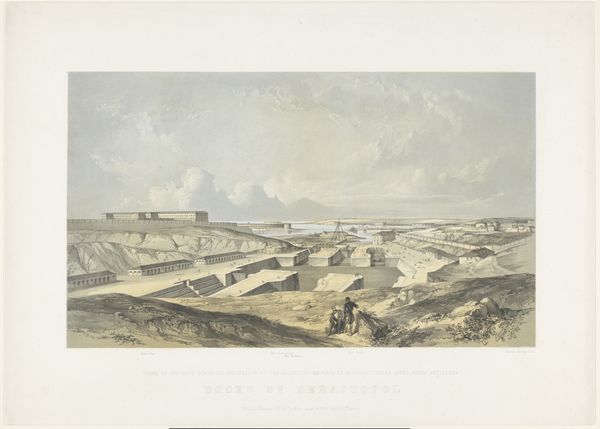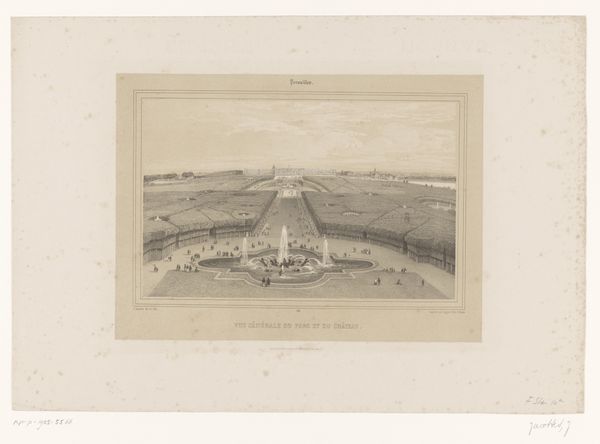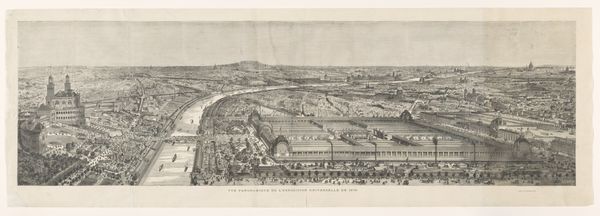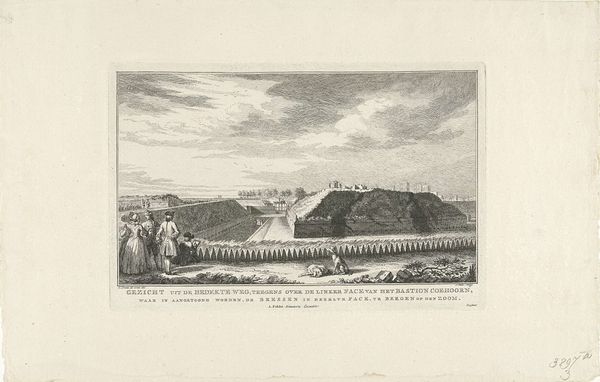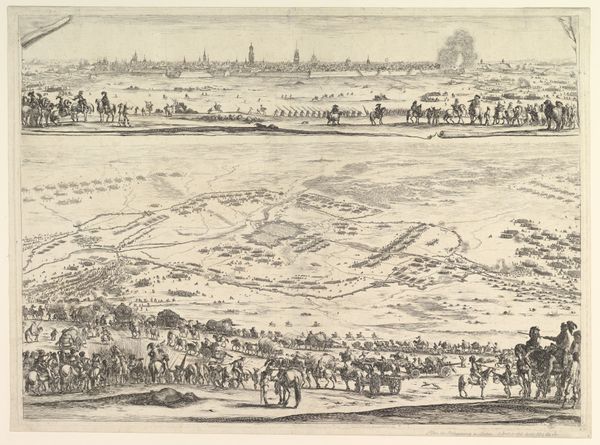
drawing, graphite
#
pencil drawn
#
drawing
#
landscape
#
charcoal drawing
#
romanticism
#
graphite
#
cityscape
#
academic-art
#
graphite
Dimensions: height 184 mm, width 293 mm
Copyright: Rijks Museum: Open Domain
This print of Jerusalem was made by Willem Frederik Wehmeyer, a Dutch artist, in the mid-19th century. It gives us a bird's-eye view of the city, surrounded by its imposing walls, with figures in the foreground observing the scene. The image speaks to the growing European fascination with the Holy Land during this period. Fueled by religious, political and even colonial interests, artists like Wehmeyer found a ready market for views of biblical sites. The lithograph allowed for easy reproduction and distribution, feeding a desire for visual representations of a land increasingly accessible through travel and archaeological discovery. Wehmeyer's image is far from a neutral record. The panoramic perspective emphasizes the city's strategic importance. The foreground figures, seemingly European in dress, position the viewer as a privileged observer, reinforcing a sense of Western dominance. To understand this image, we must explore the history of 19th-century Orientalism, the rise of biblical archaeology, and the political context of European involvement in the Middle East. Through such research, the meaning of this artwork becomes clear as a product of its time, shaped by cultural and institutional forces.
Comments
No comments
Be the first to comment and join the conversation on the ultimate creative platform.

